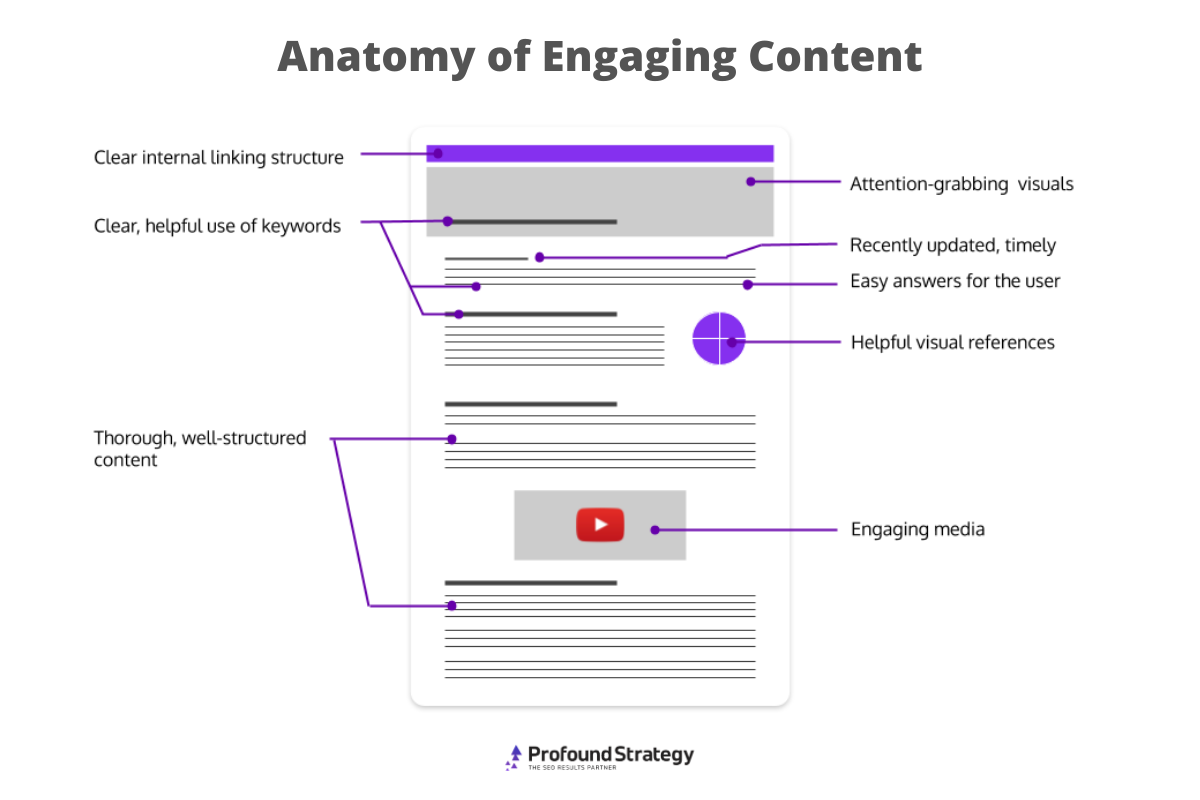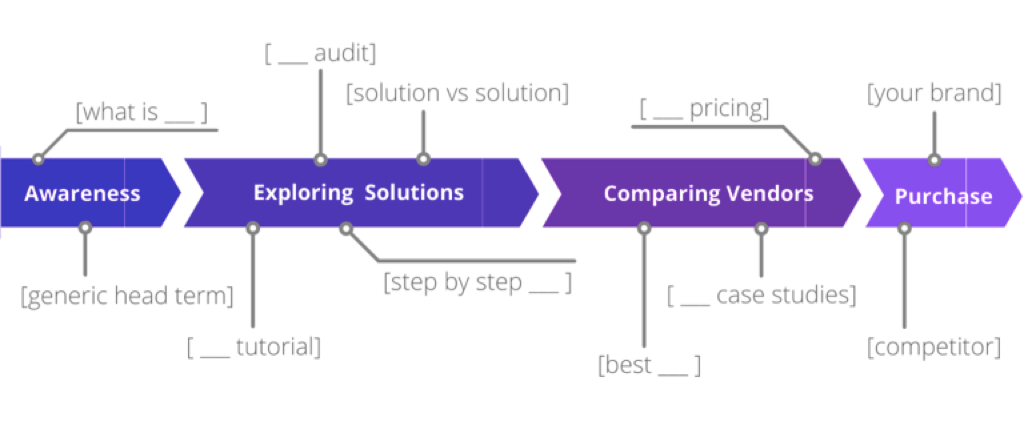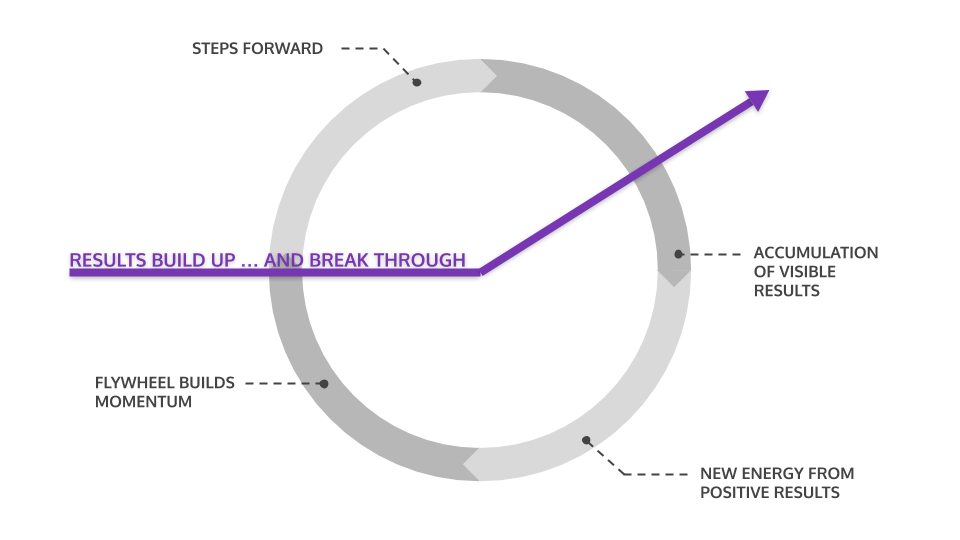No Longer Optional: 12 Reasons Why Modern Marketers Need SEO
Search engine optimization (SEO), is a digital marketing discipline that aims to help a website earn a greater volume of relevant visits from the unpaid, “organic,” results provided by search engines.
SEO has evolved so dramatically in recent years that marketers who are just getting started quickly realize they have some significant catching up to do, and that there’s a lot of outdated advice and strategy to sort through. Wading into the world of SEO requires a sizable investment of time and resources.
Investing in a partnership with an experienced SEO agency or expert is a good alternative for most brands. But that also requires something of an up-front investment.
The dilemma forces many marketers—often already strapped for resources and time—to ask if it’s really worth it. Do you really need SEO?
We think so, of course, but don’t take our word for it …
1. Organic Search is the Starting Point for Most Purchases
Organic search is usually the beginning of a customer or buyer’s journey. People turn to search engines to find information, products, and services billions of times per day. In fact, 81% of B2B buying cycles and 89% of B2C purchases start with a web search.

If a marketer’s website does not appear at the top of search results, it has little chance of earning any organic traffic and influencing the beginning of a buyer’s journey.
- 75% of users aren’t willing to scroll past the first search engine results page (SERP).
- 68% of organic clicks go to the first 5 organic links in search results.
First impressions are important. For a brand to get early access to decision makers, it needs to appear at the top of organic search results.
2. SEO Creates Trust and Authority
Users place greater trust in brands that appear higher in search. In fact, more than 60% of people expect brands to provide relevant, timely information. Brands that actually deliver on this expectation consistently earn their audience’s trust.
But the key is “consistently.” It’s not about a weekly blog post. It’s about being at the top of organic search results at every stage of the funnel—for each persona on the buying team. Meeting your target audience, in a trusted position, every time they have questions is what builds trust and authority.
3. SEO Creates a Better User Experience
Effective, modern SEO content focuses on the target audience, and their needs, first and foremost.
Ensuring users find the information they need is Google’s priority and user experience is a critical factor in Google’s algorithm. Websites that are user-friendly, fast, and informational provide the best user experience.

Although many digital marketers are already focused on producing engaging content for users, doing SEO correctly provides unique insights on how to do that. The research that goes into creating SEO content demonstrates how to create a great user experience for specific, targeted audiences.
These insights can include the target audience’s preferences about content type, key questions they need answered, product qualities they value, and more.
Learn more about how to uncover key insights that keyword lists alone will never deliver →
4. SEO Research Reveals the Buyer’s Journey
Most purchases start with a search engine, and most buying decisions—consumer and B2B—rely on search throughout the process as well.
- 2/3 to 90% of the buyer’s journey is complete before a buyer contacts a brand, and at least 67% of the buyer’s journey is now done digitally.
- By 2015, Google had experienced 91% growth, over two years, in B2B researchers using mobile search throughout the entire path (not just the initial stages).
But how are they using search to move through purchasing decisions? SEO user need research helps marketers map the buyer’s journey through organic search, so marketers can be present at every stage.

Using these insights, marketers can create an SEO content strategy that answers target users’ needs at every stage of the customer journey. This way, brands can ensure that their content shows up in search results for every persona involved in purchasing decisions.
5. Good SEO Guards Against Algorithm Changes
Google’s search engine algorithms change daily. Most often they are minor tweaks that go largely unnoticed, but some do still have sudden, large-scale implications for digital marketers.
Creating SEO- and user-focused content can make even the “big” algorithm updates non-issues.
Focusing on user needs will almost always preempt any change to Google’s ranking algorithms.
Providing the best user experience is Google’s main objective, and good SEO is focused on the same goal. By focusing on users, within the framework created by Google’s algorithm, modern SEO creates content and websites that are rarely (if ever) at odds with Google. Thus, they almost never suffer dramatically from an algorithm update.
Learn how to create an SEO strategy that thrives in the era of A.I. search algorithms. →
6. SEO is a Cost-Effective, Long-Term Strategy
SEO is a cost-effective strategy. Providing extremely helpful content yields a better return on investment due to the flywheel effect.
The idea of the flywheel effect is that a marketer can produce a certain amount of content and, once it is noticed by Google, the ROI actually increases over time—a situation that is not possible in other marketing channels.

As a marketer publishes more content, people—and search engines—gain more confidence in the website. Although great content takes time to produce, the results are worth it: SEO is the number one lead-generating source reported by inbound marketing professionals.
7. SEO Attracts Relevant Traffic With Higher Conversion Potential
These days people rarely buy something without doing at least a little bit of research. That’s why:
- 73% of in-house marketers and 76% of US agencies said SEO provided excellent or good return on investment (ROI).
- SEO leads have a 14.6% close rate, while outbound leads have a 1.7% close rate.
- 57% of B2B marketers say SEO has the biggest impact on lead generation.
Because good content marketing answers users’ questions and is in front of customers at important decision-making moments in the buyer’s journey—including when they are ready to make a purchase.
Other forms of digital marketing, such as email or targeted ads, show up on the marketer’s schedule. SEO though, provides content that appears on a trusted platform exactly when the target audience wants to find it.
8. SEO is More Effective in the Long-Run Than Paid Advertising
The moment ad spend is discontinued, traffic stops. It’s the case for any paid channel.
On the other hand, high-quality SEO content published today may take a couple of months to begin generating organic traffic, but it will drive increasing traffic six, nine, or 12 months and beyond. The longer that good content is live, the more traffic grows and the cost per lead drops.

A single, strategic piece of SEO content should continue to grow in value over time.
A high-quality piece of content, that drives targets traffic for two years, for example, ends up producing leads virtually for free. This is of a greater benefit to brands above PPC advertising, which has no long-term value beyond the campaign run.
9. SEO is a Level Playing Field (Almost)
Any marketer who can create the best content for a question or need can beat the competition in organic search. Google’s algorithms focus on the quality of content and how helpful it is to users.
Google is always looking for new, better content to answer the user’s query. As long as content is better than the competition, Google will send traffic to it.
This makes SEO especially helpful for startups and SMBs. It is a cost-effective means to remain competitive without the marketing budget available to the enterprise competition.
Yes, big organizations will have an easier time in organic search at first, because the brands carry authority and their websites have more history. However, content quality is the deciding factor for Google. Small brands regularly leapfrog big names in search by providing superior content.
10. SEO is Easy to Measure and Adjust
If SEO content isn’t performing well after several months, it’s easy to make adjustments. Good SEO tools can show how effective a piece of content is, by measuring where visitors came from, how they navigate through a site, and why they leave.
If a piece of content is not resonating with users, analytics can usually indicate why. This information can be used to update existing and future content to make SEO more engaging in real-time. Outbound marketing campaigns and paid advertisements can offer similar information, but only after content is sent out and only if those who received it respond.

11. SEO Can be Outsourced
While SEO can be more rewarding and budget-friendly than other digital marketing channels, it still requires commitment and planning. The complex nature of modern SEO makes it a good channel to outsource.
Trusted agencies:
- Are consistently up-to-date on the newest changes to search algorithms, ranking factors, and best practices.
- Have a wide array of experience with other clients, and can pass along tips and tricks to maximize SEO potential.
- Are invested in showing results quickly, meaning that business targets can be met sooner than if an internal team was figuring out an SEO strategy on their own.
12. Ignoring SEO Means Leaving Your Audience Alone with the Competition
Regardless of whether or not a brand invests in SEO, their target audience is searching for answers and solutions on search engines, and the competition probably is doing SEO. Google definitely is looking for the best content to serve those users.
Ignoring SEO leaves new leads, prospects, and revenue up for grabs at best—and it leaves the target audience alone with the competition at worst.
Marketers and businesses in the modern digital landscape simply cannot afford to not do SEO.
Choosing SEO
If you’ve started to investigate SEO, or re-launch a lackluster campaign, you have probably realized that effective SEO takes work. But organic search is where purchase cycles start, where brands build trust, and where buyers find the answers they need.
Your brand needs to be there.
So, first, decide which investment is best for your brand: giving an internal team the resources they need to learn and execute on modern SEO, or partnering with an agency that’s already doing it.
If your internal teams look like the best bet, get them started with The CMO’s Guide to Modern SEO. If you’re interested in seeing how Profound Strategy consistently drives reliable, measurable, revenue-oriented results, we’d love to chat.
